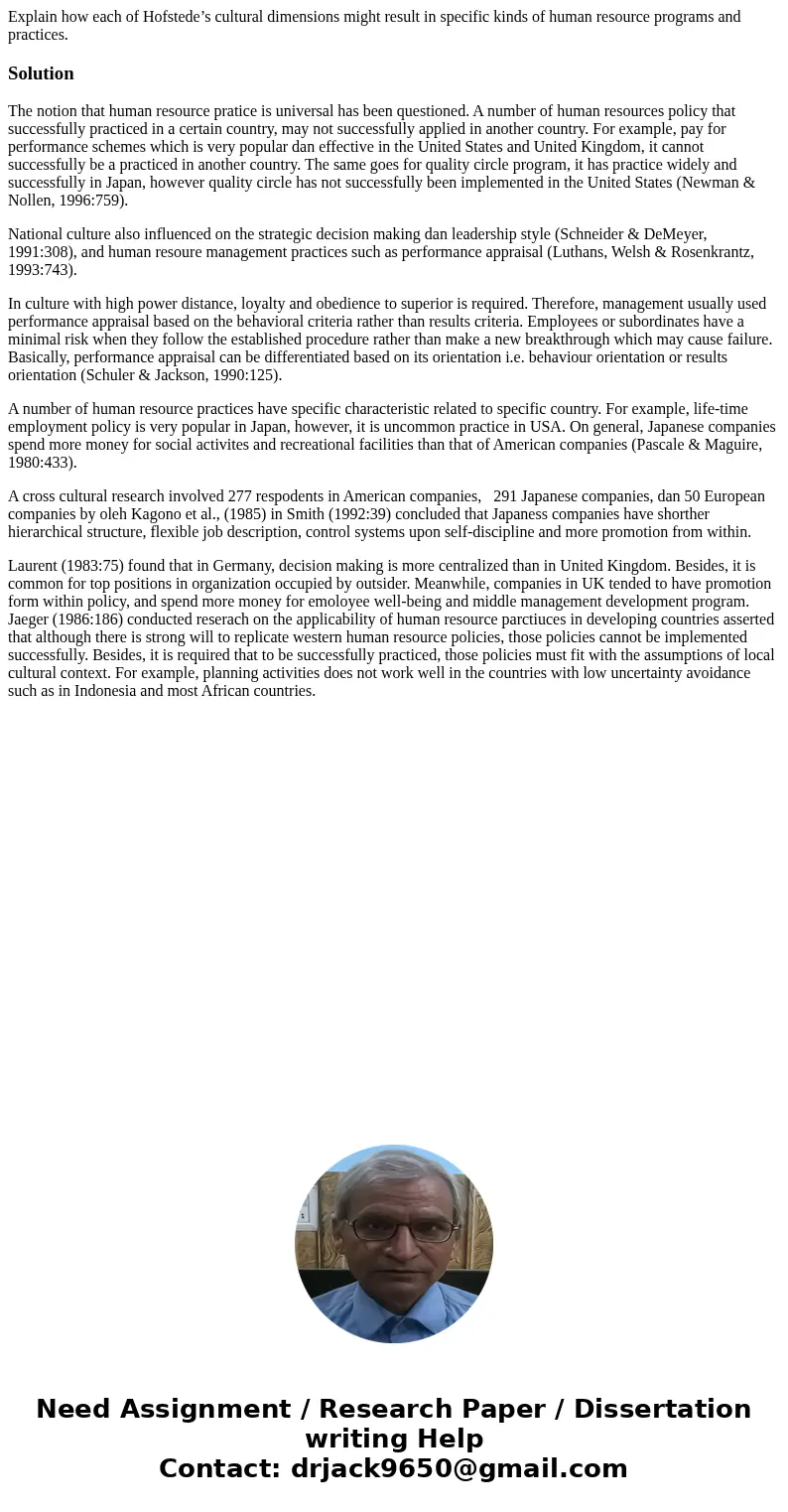Explain how each of Hofstedes cultural dimensions might resu
Explain how each of Hofstede’s cultural dimensions might result in specific kinds of human resource programs and practices.
Solution
The notion that human resource pratice is universal has been questioned. A number of human resources policy that successfully practiced in a certain country, may not successfully applied in another country. For example, pay for performance schemes which is very popular dan effective in the United States and United Kingdom, it cannot successfully be a practiced in another country. The same goes for quality circle program, it has practice widely and successfully in Japan, however quality circle has not successfully been implemented in the United States (Newman & Nollen, 1996:759).
National culture also influenced on the strategic decision making dan leadership style (Schneider & DeMeyer, 1991:308), and human resoure management practices such as performance appraisal (Luthans, Welsh & Rosenkrantz, 1993:743).
In culture with high power distance, loyalty and obedience to superior is required. Therefore, management usually used performance appraisal based on the behavioral criteria rather than results criteria. Employees or subordinates have a minimal risk when they follow the established procedure rather than make a new breakthrough which may cause failure. Basically, performance appraisal can be differentiated based on its orientation i.e. behaviour orientation or results orientation (Schuler & Jackson, 1990:125).
A number of human resource practices have specific characteristic related to specific country. For example, life-time employment policy is very popular in Japan, however, it is uncommon practice in USA. On general, Japanese companies spend more money for social activites and recreational facilities than that of American companies (Pascale & Maguire, 1980:433).
A cross cultural research involved 277 respodents in American companies, 291 Japanese companies, dan 50 European companies by oleh Kagono et al., (1985) in Smith (1992:39) concluded that Japaness companies have shorther hierarchical structure, flexible job description, control systems upon self-discipline and more promotion from within.
Laurent (1983:75) found that in Germany, decision making is more centralized than in United Kingdom. Besides, it is common for top positions in organization occupied by outsider. Meanwhile, companies in UK tended to have promotion form within policy, and spend more money for emoloyee well-being and middle management development program. Jaeger (1986:186) conducted reserach on the applicability of human resource parctiuces in developing countries asserted that although there is strong will to replicate western human resource policies, those policies cannot be implemented successfully. Besides, it is required that to be successfully practiced, those policies must fit with the assumptions of local cultural context. For example, planning activities does not work well in the countries with low uncertainty avoidance such as in Indonesia and most African countries.

 Homework Sourse
Homework Sourse